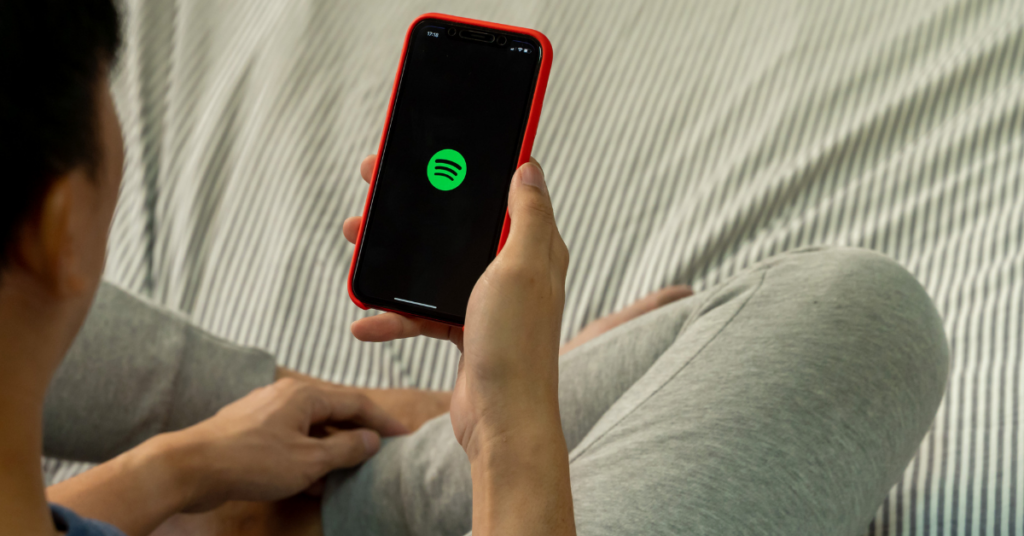Spotify is boldly moving beyond audio streaming by introducing full-length music videos. This expansion began with a beta launch in March 2024 across 12 countries. Now, the feature is available in 97 markets, including the UK, Sweden, the Philippines, and 85 new regions as of October.
This shift transforms Spotify from an audio-first platform into a multimedia hub. It aims to enhance user engagement and deepen artist-fan connections. At the same time, Spotify strengthens its position against competitors like YouTube and TikTok, which are known for their dominance in music videos.
Users can switch seamlessly between audio and video formats with a single tap. Videos also play in full screen by rotating mobile devices. Spotify has introduced visual indicators to highlight songs with videos, making content discovery easier.
In search results, videos appear alongside audio tracks, allowing users to explore music more. This hybrid format keeps listeners engaged while encouraging deeper interaction. It also offers users flexibility, choosing between listening passively or watching actively.
The beta phase showed impressive results. Users who watched a song’s video became 34% more likely to stream it again the following week. Songs with videos were also 24% more likely to be saved or shared, increasing visibility and engagement.
Spotify’s integration of video content boosts fan interaction through emotional storytelling. Visual elements deepen the connection between listeners and music, fostering loyalty. It aligns with industry trends where videos are increasingly important in music promotion and discovery.
New Tools Empower Artists and Unlock Revenue Opportunities
Spotify has introduced new tools for artists with this launch. Musicians can feature specific videos on profiles as their “Artist Pick,” highlighting key releases. The new “Video & Visuals” tab in Spotify for Artists allows musicians to track video performance and refine strategies.
These tools give artists greater control over how they connect with fans. Musicians can experiment with different visual formats, including behind-the-scenes clips and live performances. This integration also encourages partnerships with record labels for exclusive premieres, positioning Spotify as a preferred platform over YouTube.
The video rollout unlocks new monetization opportunities for Spotify. Similar to YouTube, the platform can introduce pre-roll or mid-roll video ads. Exclusive video content, like live-streamed concerts or documentaries, could become a premium feature, driving subscription growth.
These strategies diversify Spotify’s revenue streams beyond traditional audio streaming. Offering exclusive content to premium users provides an incentive to upgrade, ensuring that Spotify continues attracting new users while retaining its existing audience.
Spotify’s move into video places it in direct competition with visual-first platforms like YouTube and TikTok. However, Spotify’s advantage lies in its powerful recommendation engine. The platform can leverage user data to suggest personalized video content, enhancing music discovery.
This personalized approach creates a unique experience for Spotify users. Playlists may soon combine music videos with audio tracks, giving users variety. These features set Spotify apart by offering an uninterrupted, immersive experience that blends audio and video.
The addition of full-length videos also opens new social engagement possibilities. Spotify could introduce features like comments, likes, or in-app sharing, fostering a sense of community. Social interaction encourages users to engage more with content and stay active within the platform.
Interactive features like personalized video edits or gamified elements could attract younger users. Spotify’s focus on engagement aligns with trends seen on TikTok and other social apps. These innovations will be vital in building a loyal community on the platform.
Spotify’s venture into video sets the stage for future innovations. AI-generated visuals may enhance songs that lack official music videos. Spotify could also explore live streams, exclusive artist content, and interactive video experiences.
These new video features complement Spotify’s existing tools like Canvas and Clips. Together, they create a multimedia experience that blends sound and visuals. This dynamic approach ensures that users stay engaged with the platform longer.
Spotify’s expansion into full-length videos marks a critical moment in its evolution. It empowers artists with better tools for storytelling and fan engagement.
By integrating video, Spotify strengthens its position in the streaming market. It now competes directly with YouTube and TikTok while offering a unique mix of content. Personalized playlists, premium features, and social engagement tools make Spotify stand out.
Spotify continues to expand its video catalog and introduce new features. The platform’s focus on innovation positions it as a leader in digital entertainment. Spotify redefines how users discover, experience, and engage with music in the digital age.
